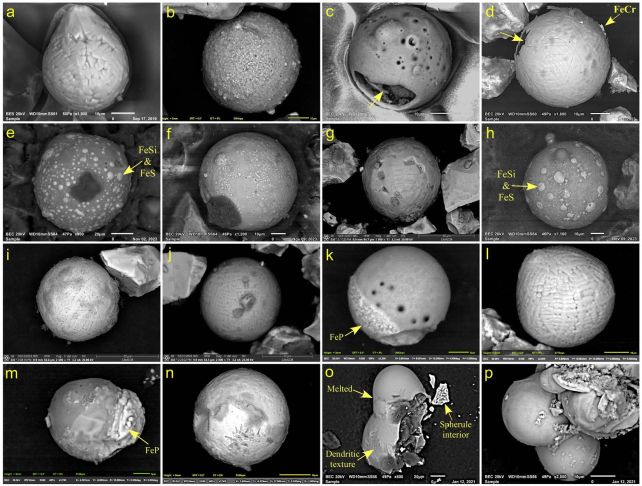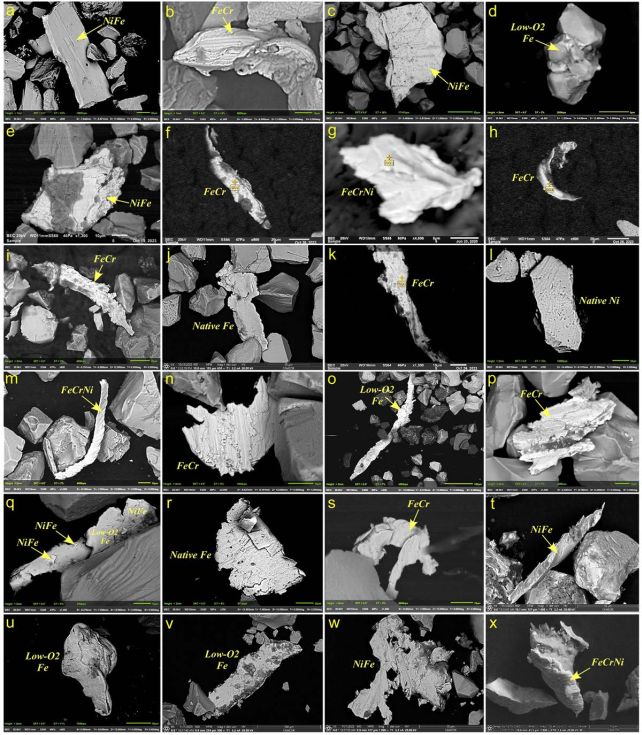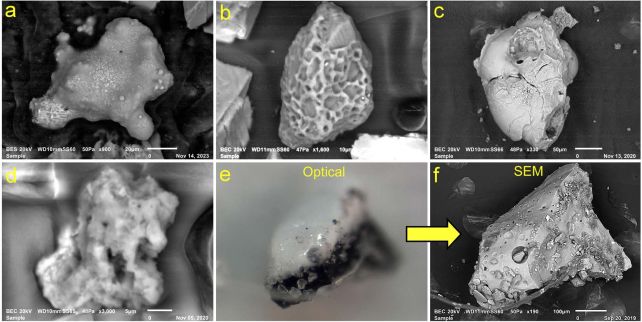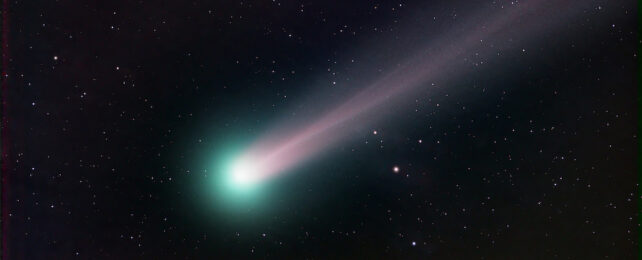Microscopic grains of alien dust buried in the sediment at the bottom of the ocean could be evidence of a comet that exploded in Earth's atmosphere 12,800 years ago.
This hypothetical event, known as the Younger Dryas impact, was invoked to explain a sudden, 1,200-year period of rapid cooling to near-glacial conditions during a time when Earth's climate was on a warm upswing. It's a controversial proposal, to say the least, with many scientists roundly rejecting it while others remain more open to the possibility.
One of the leading refutations is that no crater has been found, as one might expect from such a world-changing event… but the evidence may be much smaller than a crater.
Related: Cosmic Shrapnel That Killed The Mammoth Is Buried Deep, Scientists Claim
Led by geoscientist Christopher Moore of the University of South Carolina, a team of researchers puts forward a new line of evidence: four sediment cores from Baffin Bay near Greenland.
These are cylinders of material excavated vertically that preserve layers upon layers of seafloor sediment that were deposited over many millennia.

"We chose to analyze marine cores from Baffin Bay to determine if Younger Dryas impact proxies reported from dozens of terrestrial sites globally were present in ocean cores," Moore explains in an interview with the science journal PLOS One.
"The sites were significant because they were a considerable distance from potential anthropogenic [human] contamination, and in most cases, the cores were highly laminated, indicating that the record was relatively undisturbed."
The researchers used radiocarbon dating to determine the ages of the layers, and then used a technique called single-particle inductively coupled plasma time-of-flight mass spectrometry to look for signs of comet dust in the layers deposited during the time of the Younger Dryas cooling.

This analysis revealed tiny particles of metal with compositions consistent with a cometary origin, including iron with low oxygen and high nickel content, and microspherules rich with iron and silica.
These microspherules, the researchers say, consist mostly of material from Earth, but with a little bit of impactor material mixed in – likely from an airburst event as the comet exploded after atmospheric entry.
"The Younger Dryas sediment layer in the Baffin cores contains multiple proxies consistent with an impact event. Microspherules, twisted and deformed metallic dust particles with chemistry consistent with comet or meteoritic material, meltglass, and identification of nanoparticle peaks in key elements (e.g., platinum and iridium) suggest an impact event," Moore says.
"This evidence is supported by the findings on terrestrial sites on multiple continents in both hemispheres. This work builds on other evidence that the Younger Dryas impact event was likely global in scale."

The researchers next plan to broaden the scale of their investigation by examining sediment cores from other ocean sites around the world.
Their findings have been published in PLOS One.
